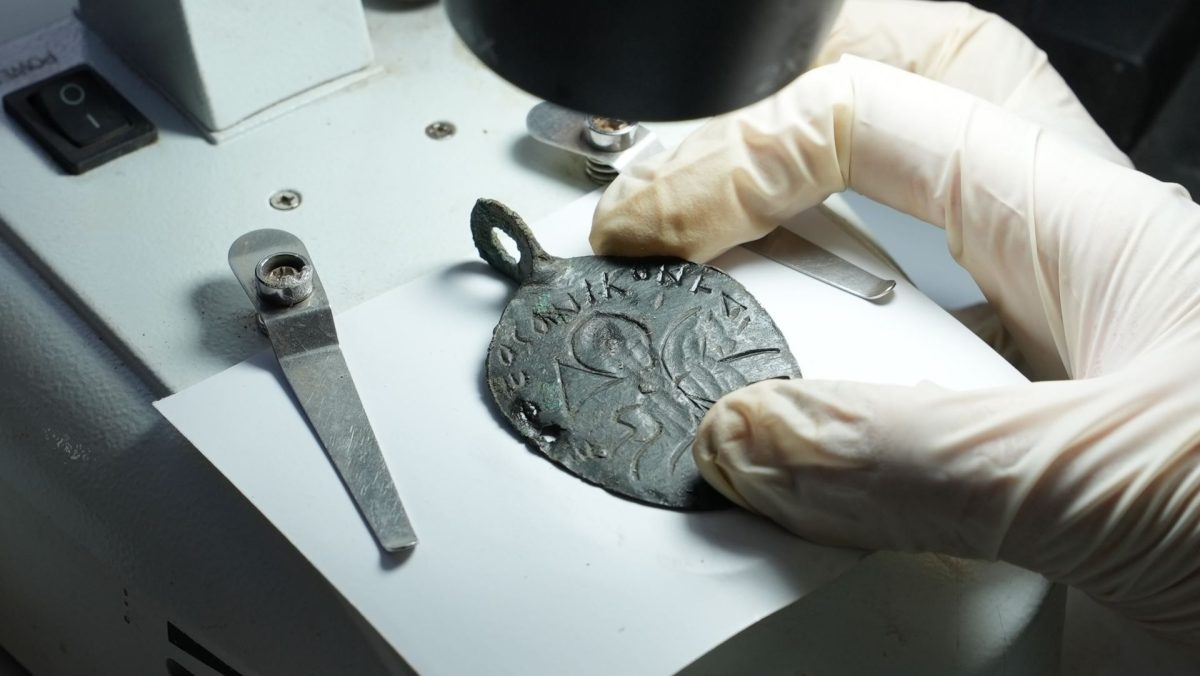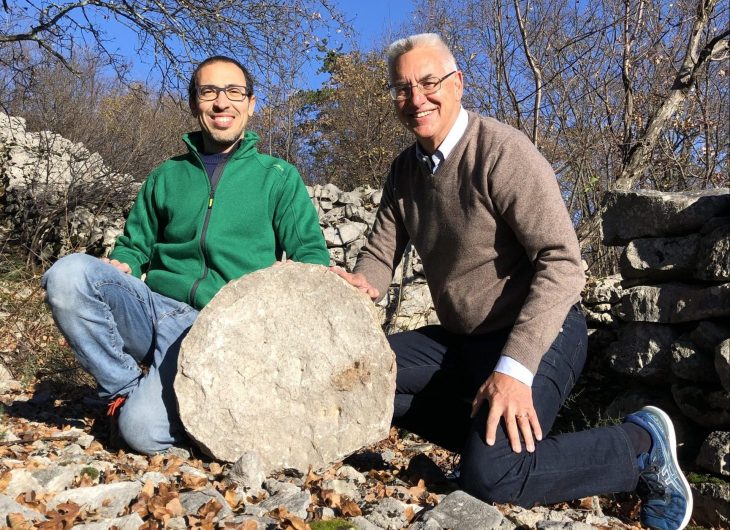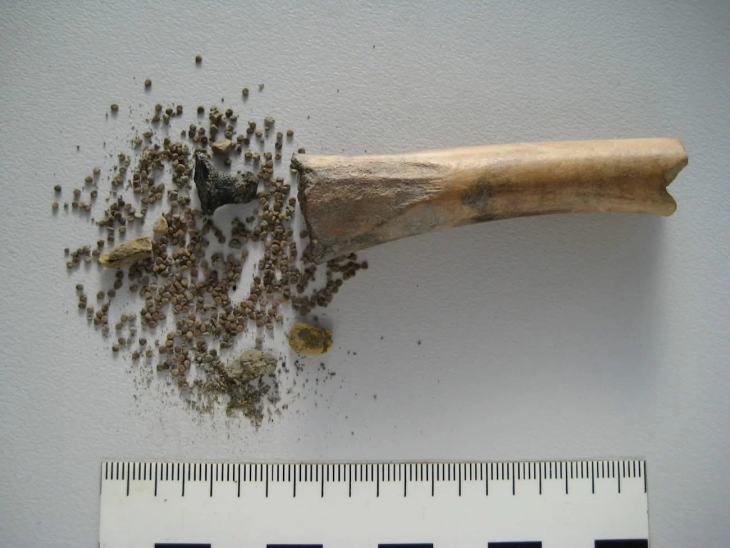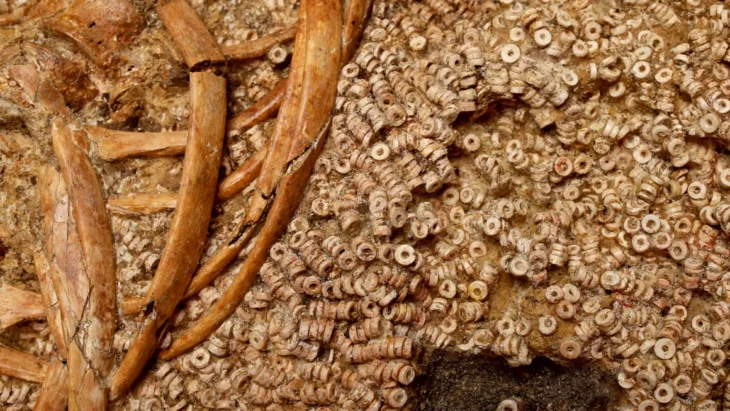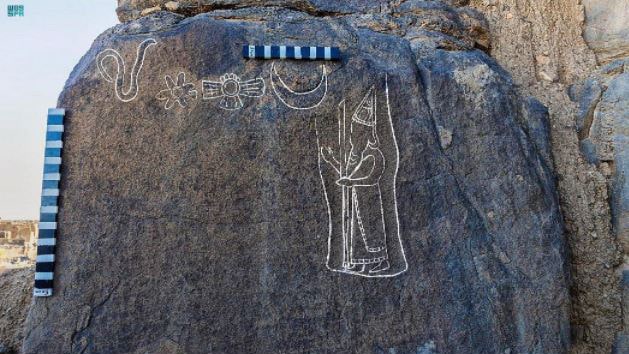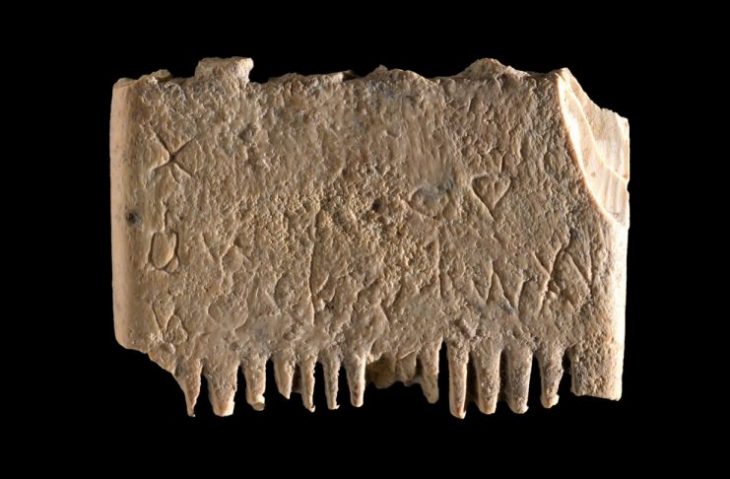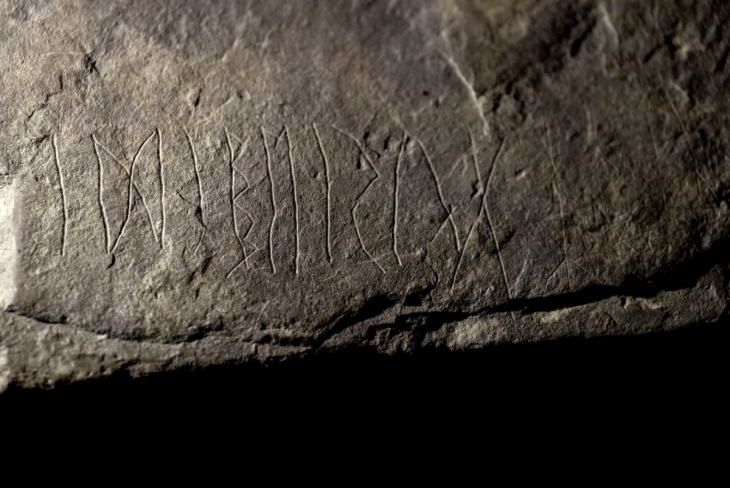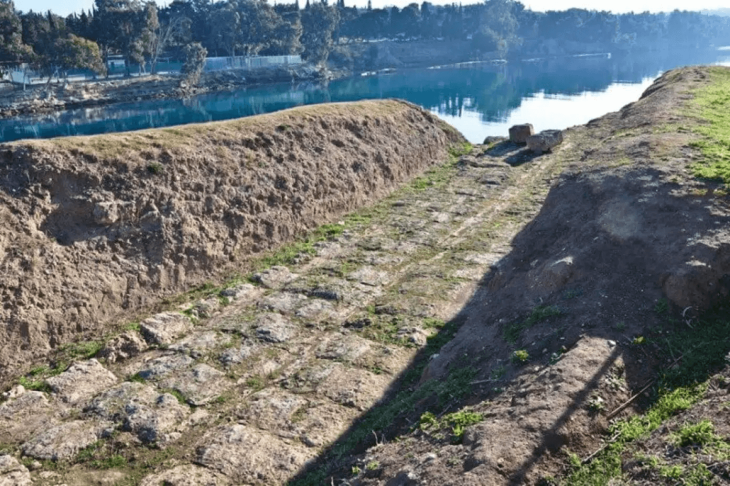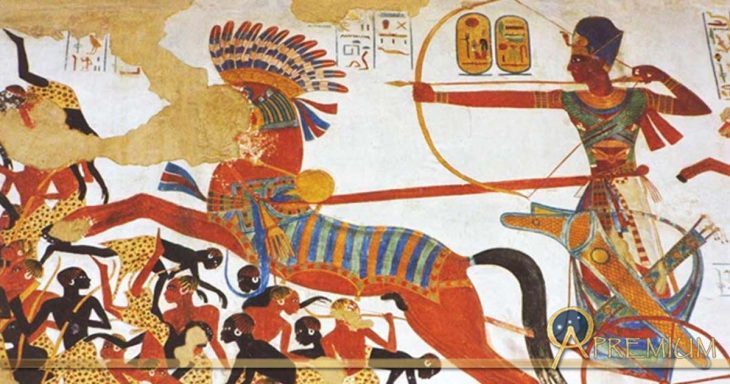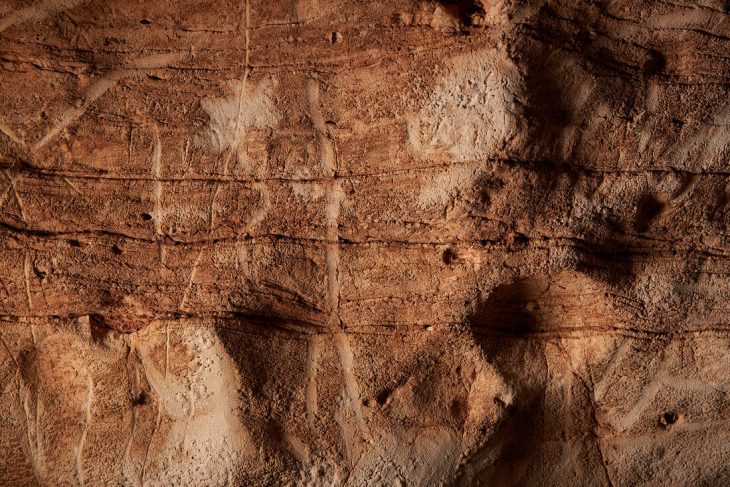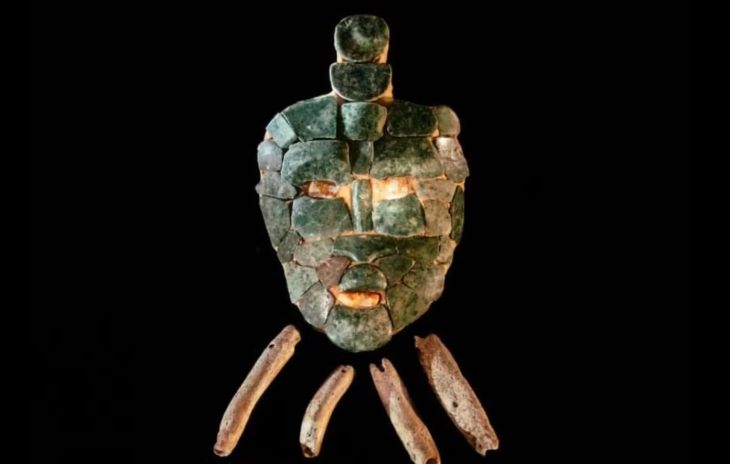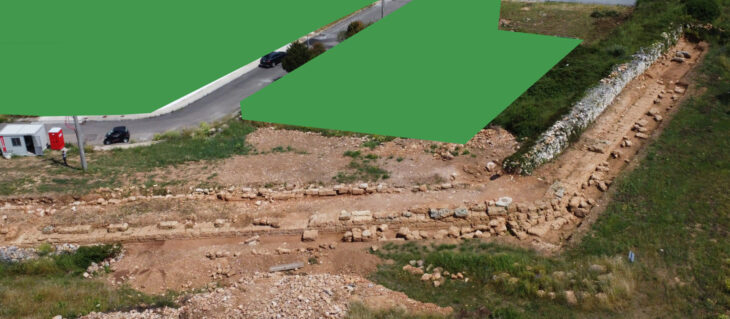During the excavations in the ancient city of Hadrianopolis in Eskipazar district of Karabük, Türkiye, an amulet from the 5th century A.D. depicting the Prophet Solomon spearing the devil on horseback was unearthed.
The ancient city, which served as a settlement in the late Chalcolithic, Roman, and early Byzantine eras, is still undergoing excavation and restoration work under the direction of associate professor Ersin Çelikbaş from the Department of Archaeology at Karabük University’s Faculty of Literature.
During excavations at the ancient city, known as the “Zeugma of the Black Sea,” an amulet pendant depicting the Prophet Solomon from the fifth century A.D. was discovered.
Çelikbaş explained that work on the project continues in the ancient city. Noting that significant finds were found, saying, “One of them was uncovered this week during the excavation of the structure we named ‘SDJ-3.’ We believe it is a significant artifact for Anatolian archaeology since no similar examples have been found in this region before. It is actually an amulet pendant.”

Karabuk University Faculty of Letters, Department of Archaeology Assoc. Prof. Dr. Ersin Çelikbaş stated that this artifact is a very important discovery for Anatolian archaeology, “The depiction shows the Prophet Solomon on horseback, spearing a demon. Why this depiction? Because the Prophet Solomon is important in all three major religions. He is noted as a ruler in Judaism and the Bible and in Islam, he is recognized not only as a ruler but also as a prophet. Therefore, the depiction of the Prophet Solomon, important in monotheistic religions, on this pendant both surprised us and showed us its importance for Anatolian archaeology.”
Çelikbaş noted that the inscription on the pendant reads “Our Lord has overcome evil” and said: “Why was this pendant, this amulet, found here? In fact, it has to do with the military character of Hadrianopolis. We have previously identified evidence of a cavalry unit here through archaeological finds.”
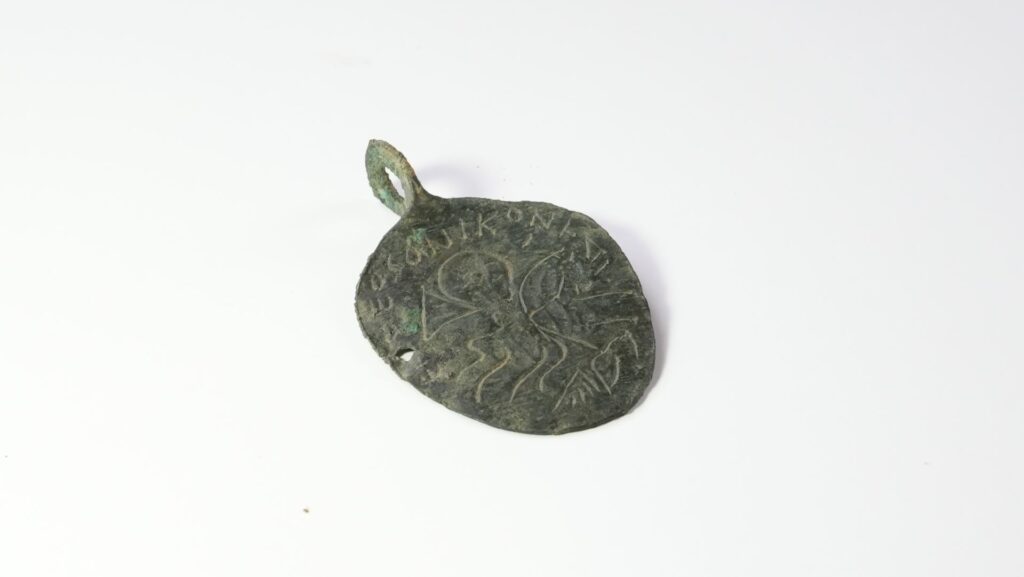
Çelikbaş noted that the inscription on the pendant reads “Our Lord has overcome evil” and said: “Why was this pendant, this amulet, found here? In fact, it has to do with the military character of Hadrianopolis. We have previously identified evidence of a cavalry unit here through archaeological finds. Solomon is also known as the commander of armies. We understand that he was also considered as a protective figure for the Roman and Byzantine cavalry at Hadrianopolis.”
Çelikbaş said: “The front depicts the Prophet Solomon and mentions God’s triumph over evil, while the back bears the names of our four holy angels: Azrael, Gabriel, Michael, and Israfil. This is also very significant. No similar artifact has been found in Anatolian archaeology to date. Only one comparable example in terms of depiction has been found in Jerusalem. The appearance of two similar artifacts over such great distances indicates that this area was an important religious center in antiquity. Based on the fonts of the inscriptions and stratigraphic data from our studies, we date the artifact to the fifth century A.D.”
According to the static graphic analyses, the amulet was dated to the 5th century AD. It was stated that this discovery once again reveals the historical and religious importance of Anatolia.
Cover Image Credit: Karabük University

